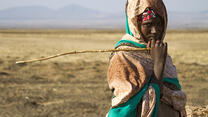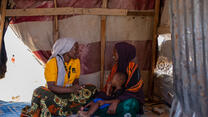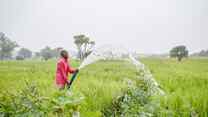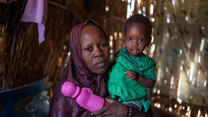Current studies and literature have argued that strategies for solutions should start at the onset of displacement. Solutions planning is most commonly initiated after displacement becomes protracted, by which point refugees are often dependent on humanitarian assistance.
Given the unlikelihood of return or resettlement in the early stages of displacement, a solutions- oriented approach must inevitably have a primary focus on building refugee self-reliance and resilience in the country of asylum. Adopting an approach that also engages government, development and private sector actors, andprovides support to host communities and local institutions, is critical.
Focusing on the South Sudanese refugee caseload in Kenya and Uganda, this study sought to identify:
- Challenges and opportunities vis-à-vis early solutions planning, and
- Practical actions that can be taken to operationalize early solutions planning.
The primary sources of data for this study were interviews with 69 key informants- representatives of governments, donors, the UN and NGOs- and 7 focus group discussions with refugees and host community members.
Summary of findings
Uganda’s refugee policy provides a wide range of rights, including freedom of movement and the right to work. Refugees are allocated a plot of land for cultivation in a settlement, and refugees and host communities have traditionally accessed the same government-run services. Kenya’s policy of encampment has severely limited opportunities for self-reliance, inhibiting engagement in business, trade and other livelihood opportunities.
Whereas the environment in Uganda offers a good starting point for early solutions planning, in Kenya there is a need to identify opportunities within a restricted policy framework and develop strategies for increasing those opportunities through influencing policy change. In terms of global refugee hosting environments, Kenya is much more the norm.
Despite the differences in the policy environment and attitudes towards refugee hosting, the response to South Sudanese displacement in both Kenya and Uganda since December 2013 has been very much in emergency mode, with a focus on receiving and stabilizing new populations, and an ongoing care and maintenance approach. A number of common constraints to early solutions planning were identified by key informants across the two countries:
- South Sudanese refugees are located in poor, marginalized areas, where there is a lack of opportunities to work, trade or earn an income.
- Operational agencies often lack time, funding and expertise for longer-term thinking and planning.
- There is a lack of inclusive fora where solutions are discussed jointly by humanitarian, development and government actors, and limited space for such discussions within existing humanitarian coordination mechanisms.
- There is a lack of information on who is likely to come and in what number, and, after refugees have arrived, a lack of data on who the refugees are, particularly their previous means of livelihood and their skills and assets.
- Traditional mindsets around how to respond to displacement inhibit innovative new approaches and partnerships between humanitarian, development, private sector, host communities and refugees.
There are some signs of a shift towards a more solutions-oriented approach in the refugee response in both countries. For example, the Refugee and Host Population Empowerment (ReHoPE) strategy in Uganda and the (KISEDP) in Kenya are examples of national and local-level planning that prioritize building the self-reliance and resilience of refugees, host communities and local institutions, although there have been challenges and concerns related to both initiatives which are highlighted in the full report.
Within the region, there are also some promising signs of increased engagement of development actors. The recently established Regional Secretariat for Forced Displacement and Mixed Migration of the Intergovernmental Authority on Development (IGAD) will play a key role in engaging member states in policy dialogue and forging partnerships between humanitarian and development actors.
The IGAD Secretariat is funded by the World Bank, and reflects their increased investment in addressing forced migration in the region. The European Union has also introduced the Trust Fund for Africa, which places a strong focus on addressing forced displacement through humanitarian, resilience and development approaches.



